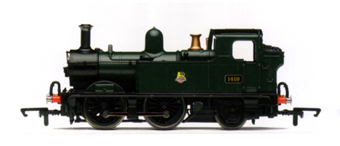In this way I can run the layout as either DCC or DC with a simple toggle switch, here is a photo of the installation;
On the left on top of the baseboard is the DC controller plugged into the left hand socket. Next to that is the toggle switch, left for DC and right for DCC. Then comes the NCE DCC controller interface module set into the baseboard edge and finally on the right is the NCE DCC hand held controller itself (sitting in a holder fixed to the baseboard), the cable from the bottom of this controller is plugged into the interface module just to the left of the red led on the module.
I have now laid the twin track oval that allows continuous running of at least two trains at the same time, here is an overall photo;
And here are some staged photos of the layout and some of the stock I have so far aquired;
The three locos below were given to me by a friend. They were made by his Dad who was a keen GWR loco modeller, but who sadly recently died, The models are excellent metal kits and well worth a place on any layout.
The above model is finished in "Photographic Grey" livery. In the days before colour photos the railway companies would finish examples of new types of locos in this livery so that they would photograph well, they never usually entered service in this livery, after being photographed they would be re-painted in normal company livery. The accompanying black and white photos would be used for publicity or record purposes.
In the top photo above is a Hornby GWR 14xx Tank loco pulling a Hornby GWR Autocoach, this was a very common sight on GWR branchlines.
I purchased the loco secondhand from ebay as a British Rail veriant with the old BR Lion and Wheel logo but my layout is set in the Grouping days, before British Rail was formed, so I changed the loco from BR livery to GWR.
Here is a photo of the loco as delivered;
And as modified to GWR Livery
Finally, here is a link to a short (1 minute) video of this loco and autocoach making a circuit of the layout.









































